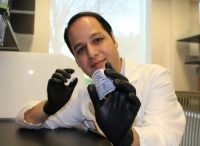Researchers have developed a “lab-on-a-chip” using an inkjet printer which will refine “medical diagnostics”.

Silicon Republic reported that the new development will cost less than one US cent to make, and that it will advance “micro-power capabilities”, as the “sensors powered by it have created a field of engineering that pushes the limits”. The research was carried out at Stanford University Medical Centre, with the team being led by Rahi Esfandyarpour, who published the paper in the Proceedings of the National Academy of Sciences detailing “a two part system chip”.
The chip enables users to “analyse different cell types” without the need for “fluorescent or magnetic labels” that track cells normally. This is done by combining “microfluidics, electronics and inkjet technology”, with the first part of the chip containing a “clear silicone microfluidic chamber” for the cells and “a reusable electronic strip”.
An inkjet printer is used in the second part to print the electronic strip onto “a flexible sheet of polyester”, and the printer uses “conductive nanoparticle ink” which is readily available on the market. This technology is much cheaper than the existing ones, and is more precise, quicker and can “capture a single cell from isolated rare cells”. Ordinarily the machines that do this, cytomer machines, cost up to $100,000 (€93,450), and that is without the operating cost.
The team developed the device for use in developing countries who don’t have access to expensive technology for medical diagnosis, and this will help the to “sequence tumour DNA” and other diseases. The chip takes 20 minutes to make and removes the need for clinical facilities.
Esfandyarpour commented: “Enabling early detection of diseases is one of the greatest opportunities we have for developing effective treatments. Maybe $1 (€.93) in the US doesn’t count [for] that much, but somewhere in the developing world, it’s a lot of money.”
